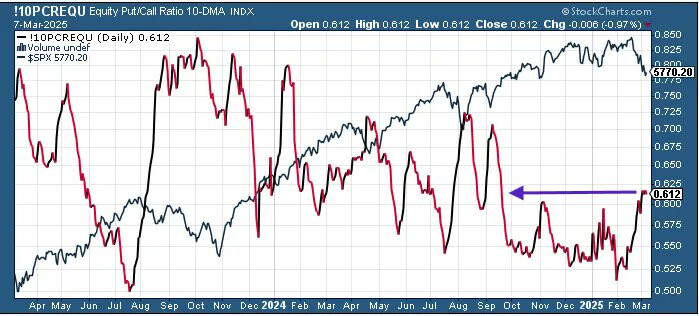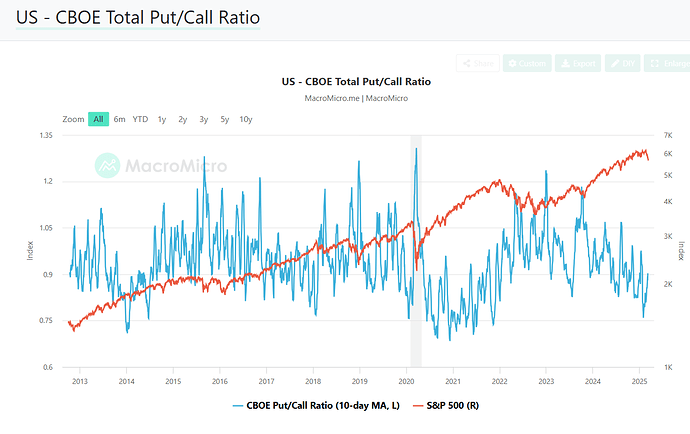The equity put-call ratio (PCR) is a widely used market sentiment indicator derived from options trading. It measures the volume (or open interest) of put options relative to call options in the equity market.
- Put options: Represent bearish bets (expecting a price decline).
- Call options: Represent bullish bets (expecting a price increase).
Why Is the Equity Put-Call Ratio Important?
The PCR serves as a contrarian sentiment indicator:
- Low PCR (more calls than puts) → Indicates excessive optimism (potential overbought conditions).
- High PCR (more puts than calls) → Indicates excessive pessimism (potential oversold conditions).
Institutional traders and analysts monitor PCR to gauge market sentiment, potential reversals, and risk appetite.
Interpretation of Movements
A. High Put-Call Ratio (Above 1.0) → Bearish or Contrarian Bullish?
- A high PCR suggests that traders are heavily buying puts, expecting a market decline.
- However, extreme pessimism can signal a contrarian buying opportunity—if too many investors are hedging against a fall, it might indicate that selling is overdone.
- Example: PCR spikes above 1.2–1.5 during extreme fear (e.g., March 2020 COVID-19 crash).
B. Low Put-Call Ratio (Below 0.7) → Bullish or Contrarian Bearish?
- A low PCR suggests excessive call buying, which typically indicates strong bullish sentiment.
- However, excessive optimism often leads to overbought conditions, signaling a potential correction.
- Example: PCR below 0.5 has historically preceded short-term market tops.
C. Neutral Put-Call Ratio (~0.7 to 1.0)
- Indicates balanced sentiment, often seen in stable or consolidating markets.

